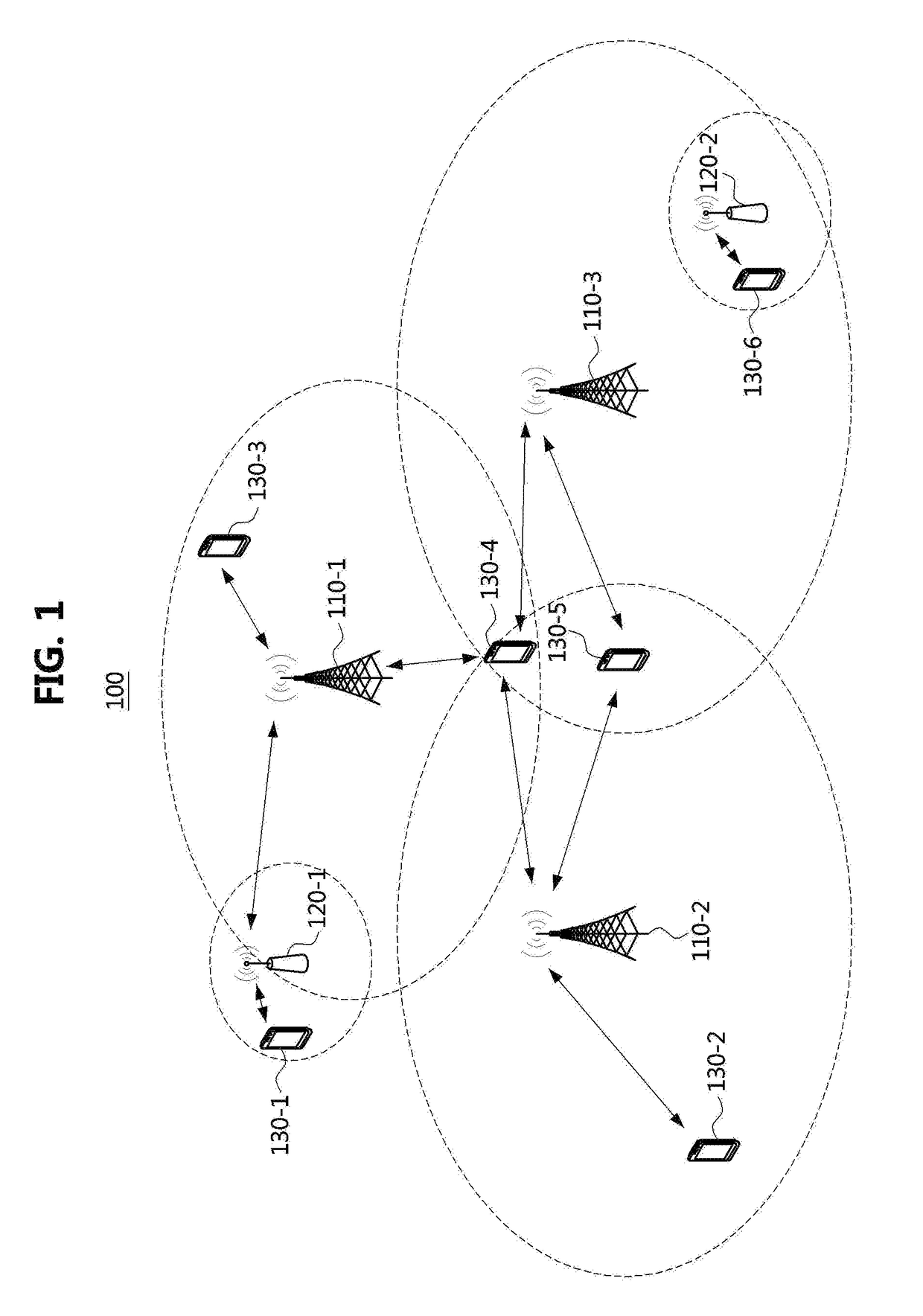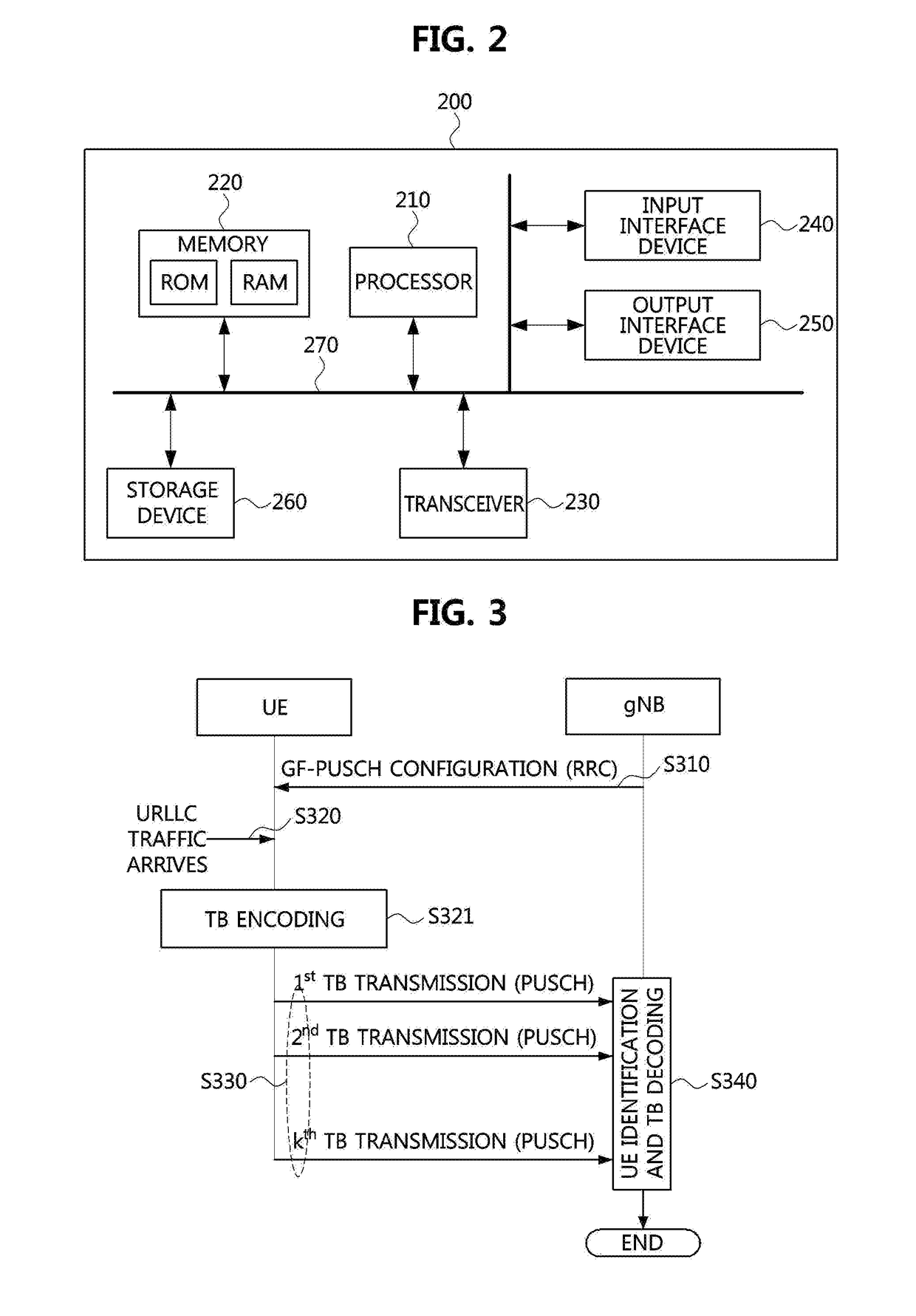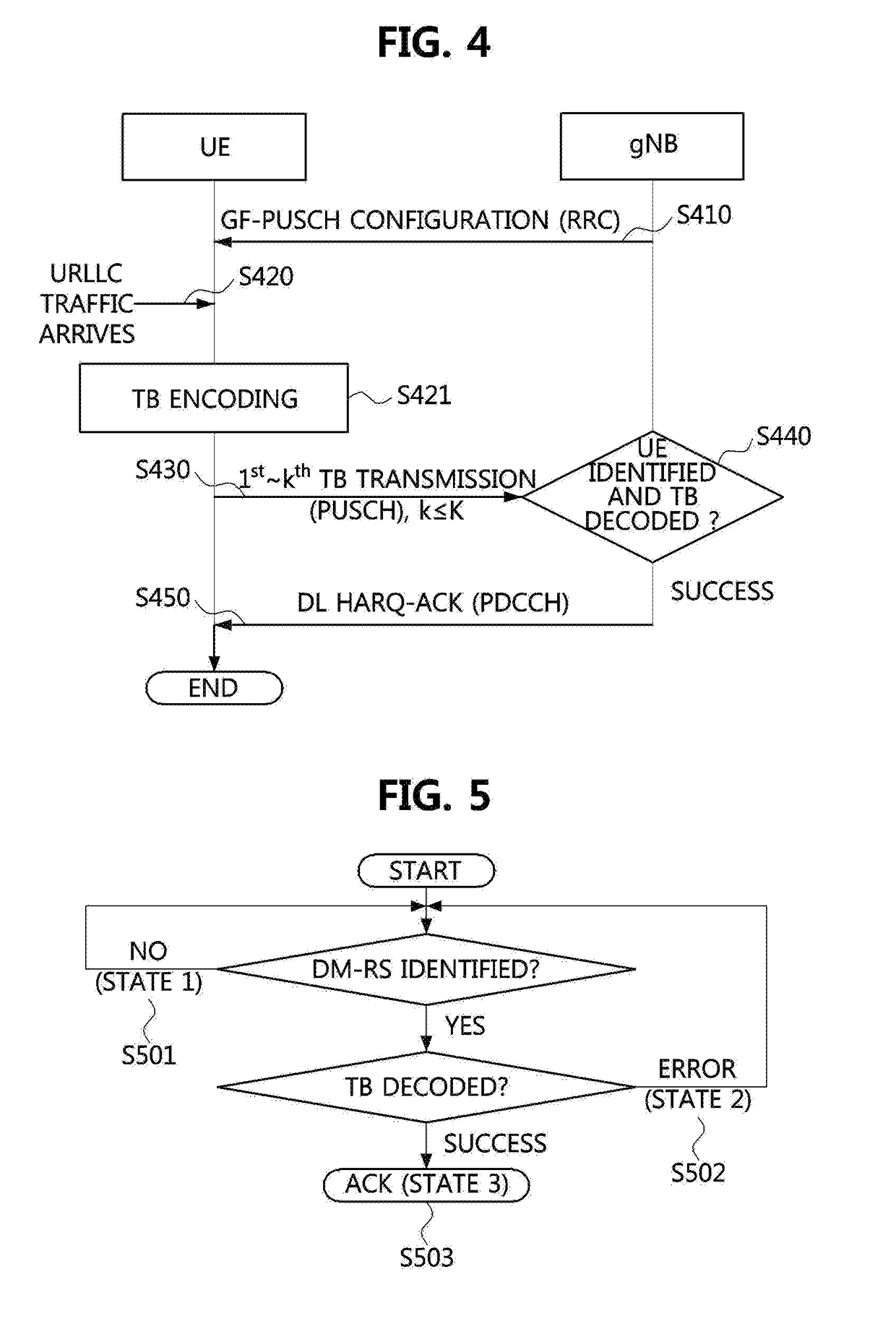Method for transmitting and receiving uplink data channel, and apparatus thereof
a technology of uplink data and transmission method, applied in the field of mobile communication system, to achieve the effect of high reception quality and low delay tim
- Summary
- Abstract
- Description
- Claims
- Application Information
AI Technical Summary
Benefits of technology
Problems solved by technology
Method used
Image
Examples
first example
① First Example
[0225]The serving base station may configure N (≥1) frequency resources available for the SR to the UE through the RRC signaling. Then, the serving base station may notify a CSIT to the UE through a PDSCH. The UE may know which frequency resource channel gain is higher according to the CSIT. When the UE needs to transmit the SR, the UE may select a frequency resource with the highest channel gain among the frequency resources, and transmit the SR in the selected frequency resource. The serving base station may know the frequency resource selected by the UE in advance, and thus may not perform a blind detection. In the case where a channel reciprocity is fully or partially established, the UE may estimate the CSIT using a DL RS even if the serving base station does not transmit the CSIT to the UE, so that the corresponding procedure may be omitted.
second example
② Second Example
[0226]The serving base station may configure N (≥1) frequency resources available for the SR to the UE through the RRC signaling. Then, the serving base station may inform the UE of an index indicating a frequency resource among the frequency resources. As a method for this, an index may be transmitted using a PDCCH, or an SR resource using a specific frequency resource may be activated or deactivated using a MAC control element (CE). When the UE needs to transmit the SR, the UE may transmit the SR in the SR resource corresponding to the index received from the serving base station or in the SR resource activated by the MAC CE.
[0227]When the index of the frequency resource used for transmitting the SR is changed, the serving base station may notify the updated index to the UE using the PDCCH or the MAC CE. For this, the serving base station may transmit a periodic PDCCH or a periodic MAC CE to the UE. Alternatively, in an environment where the mobility of the UE is s...
third example
③ Third Example
[0229]The serving base station may configure N (≥1) frequency resources available for the SR to the UE through the RRC signaling. The UE may receive a DL physical layer signal and a DL physical channel from the serving base station, and apply the channel reciprocity to estimate a UL channel response roughly. Based on this, the UE may select one frequency resource used by the SR. Unlike the above-described examples (the first example and the second example), there is an advantage that the signaling overhead is small because the serving base station does not explicitly indicate the frequency resource to the UE. If the serving base station also estimates the UL channel response through a sounding reference signal (SRS) or the like, and knows which frequency resource the UE selects, the serving base station may not perform a blind detection. However, if the serving base station does not trust antenna calibration of the UE, it may be preferable to perform the blind detecti...
PUM
 Login to View More
Login to View More Abstract
Description
Claims
Application Information
 Login to View More
Login to View More - R&D
- Intellectual Property
- Life Sciences
- Materials
- Tech Scout
- Unparalleled Data Quality
- Higher Quality Content
- 60% Fewer Hallucinations
Browse by: Latest US Patents, China's latest patents, Technical Efficacy Thesaurus, Application Domain, Technology Topic, Popular Technical Reports.
© 2025 PatSnap. All rights reserved.Legal|Privacy policy|Modern Slavery Act Transparency Statement|Sitemap|About US| Contact US: help@patsnap.com



